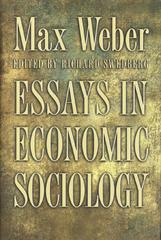Question
Q1. Adsorption is the process of controlling which type of air pollutants: a. Gaseous Air Pollutants b. Particulate Air Pollutants. c. Vehicular Pollution d. None
Q1. Adsorption is the process of controlling which type of air pollutants: a. Gaseous Air Pollutants b. Particulate Air Pollutants. c. Vehicular Pollution d. None of these
Q2. When and where was the U.N. Framework Convention on Climate Change Signed? Q3. Which step in the Process of EIA helps in determining the key and significant impacts of a developmental activity?
Q4. When was EPA enacted?
Q5. What is unit of measurement of Noise?
Q6. What is meant by 5R?
Q7. Which method helps to reduce erosion due to water? a. Contour farming b. Monoculture c. Tillage d. None of these
Q8. What is deep well injection?
Identify a process shown in the diagram that removes carbon from the atmosphere.
(b) For a process shown in the diagram that also plays a role in the hydrologic cycle, describe the role that process plays in the hydrologic cycle.
(c) Identify a process shown in the diagram that sequesters carbon from the atmosphere for a geological period of time.
(d) Explain how the rate at which fossil fuels are transferred into the atmosphere, as shown in the diagram, has altered the carbon cycle during the past 250 years.
(e) Identify an energy source in the diagram commonly used to produce electricity that also causes acid rain and describe how it causes acid rain.
(f) Describe a method for reducing the cause of acid rain you described in part (e).
Scientists are interested in investigating how limestone can be used to remediate the effects of acid rain. They collect water from a lake that has recently been exposed to acid rain. They divide the water into 10 different tanks and add different amounts of limestone to nine of the tanks. No limestone is added to one of the tanks. The pH of the water in the tanks is measured before the limestone is added and once every hour for 24 hours. (g) Identify the independent variable in this investigation.
(h) Identify the dependent variable in this investigation.
(i) Identify the control group in this investigation.
(j) Describe how the results of the experiment would likely change if it was conducted at a lower temperature.
(k) Describe one additional variable that has not been mentioned that could affect the results of the investigation.
(l) Describe a modification that could be made to the investigation that would affect the results.
(a) Describe how a thermal inversion would form in the city shown in the diagram.
(b) Describe the relationship between a thermal inversion and pollution.
(c) Explain how one factor related to climate could make the city shown in the diagram susceptible to prolonged periods of ground-level ozone and smog.
(d) Explain how a geographical feature could make the city shown in the diagram susceptible to prolonged periods of ground-level ozone and smog.
(e) Explain how the average annual precipitation compares on the east and west sides of the mountains shown in the diagram.
Air pollution is not the only problem associated with urbanization. Human-made structures in urban areas can increase the amount of runoff reaching streams and lakes. (f) Describe how a common human-made structure found in urban areas contributes to urban runoff reaching streams and lakes.
(g) Propose a solution to reduce the effects of urban runoff from the structure you described in part (g).
(h) Justify the solution proposed in (h) by describing an additional benefit of your solution, other than reducing the effects of urban runoff.r
Step by Step Solution
There are 3 Steps involved in it
Step: 1

Get Instant Access to Expert-Tailored Solutions
See step-by-step solutions with expert insights and AI powered tools for academic success
Step: 2

Step: 3

Ace Your Homework with AI
Get the answers you need in no time with our AI-driven, step-by-step assistance
Get Started


